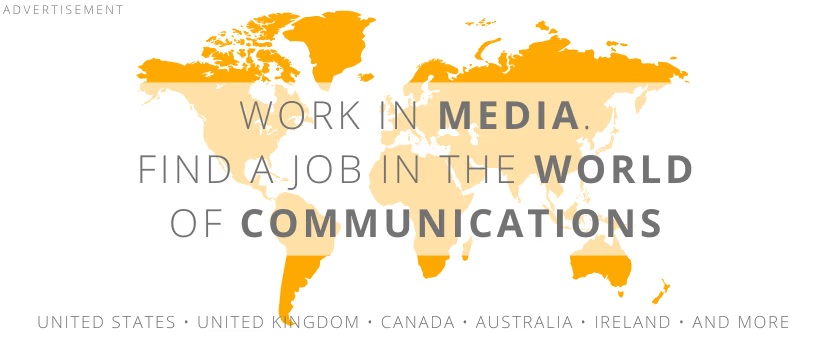 illustration: bing.com/create
illustration: bing.com/createThe authors focused on news consumption, media trust, and the impact of new technologies, such as artificial intelligence (AI), on the media industry. Key findings and figures paint a sometimes concerning picture.
Decline in Interest and Trust in Media
The report highlights a concerning trend of decreasing interest in news, leading to fewer people actively seeking information. Additionally, trust in media remains low, with only 40% of respondents across all surveyed countries stating that they trust most news.
- At the peak of the COVID-19 pandemic, this percentage was 4 points higher;
- In the United Kingdom, interest in news has nearly halved over the past decade - from 70% in 2015 to just 38% in 2024;
- A similar trend is observed in Argentina, where interest in news dropped from 77% in 2017 to 45% in 2024;
- In countries like Greece and Hungary, trust in media is at its lowest, reaching only 23%;
- Finland is the only country where interest in news has remained high, an exception to the overall downward trend.
It’s also worth noting that women and young people are a significant part of this shift. Among younger generations, a growing percentage avoid traditional news in favor of alternative sources, such as social media. Platforms like TikTok and Instagram, for instance, are becoming primary news sources for young people, further reducing their interest in traditional forms of journalism.
The Impact of Social Media and Influencers
The environment for news publishers has changed significantly due to social media algorithm adjustments and the rise of new platforms. Traditional platforms like Facebook and X (formerly Twitter) limit news visibility, while visual and video-based platforms like TikTok, Instagram, and YouTube gain prominence. This shift makes it harder for traditional media to retain audiences and drive traffic to their sites.
The report highlights clear generational differences in how people access news:
- Older audiences are more likely to use websites and news apps directly;
- Younger generations increasingly rely on social media and search engines as primary gateways to information;
- This generational shift emphasizes the need for media strategies tailored to different age groups.
The report also highlights the growing influence of alternative voices and influencers on platforms like YouTube and Instagram. These influencers often attract large audiences, particularly among younger users, and compete with traditional media for attention. This trend raises questions about the quality and reliability of news consumed through these channels.
Artificial Intelligence in Media
The use of AI in news production and distribution is growing, with some publishers using AI tools for content generation, summaries, and even news presentation. For example:
- Nordic publisher Schibsted uses AI to generate “highlights” at the start of many articles to increase reader engagement;
- In Germany, Axel Springer introduced AI to write over 5% of published articles, using an AI bot named Klara Indernach;
- In Mexico, Radio Fórmula went further, introducing AI-generated news anchors like Nat, who delivers news on their website and social media.
However, the report warns against over-reliance on AI, as audiences generally prefer human oversight in news production. There are also concerns about the reliability of AI-generated content, especially in distinguishing real news from misinformation.
Economic Pressure and Paid Access
The report discusses ongoing financial challenges facing the media industry, including declining ad revenue and rising costs. These economic pressures have led to layoffs, closures, and cuts in newsrooms worldwide. Additionally, dependence on social media platforms, which increasingly deprioritize news, raises uncertainty about the future of journalism.
Despite these challenges, there are markets where a significant number of people are willing to pay for online news. For example, around 40% of Norwegians and 22% of Americans pay for online news. However, willingness to pay has reached a saturation point, with many consumers still preferring free news sources.
The report suggests that media organizations need to clearly demonstrate their value to encourage more consumers to pay for their content.
Conclusions and Implications
The “Digital News Report 2024” presents a complex picture of the current state of digital news media. Although there are clear challenges – such as declining trust, changing consumption habits, and economic pressures – there are also opportunities for media organizations to innovate and adapt to new realities. The rise of AI, for example, offers potential to increase efficiency and personalize news delivery, but it requires careful implementation to maintain audience trust.
Moreover, as social media platforms evolve, media organizations must find new ways to engage audiences, especially younger generations who are increasingly turning away from traditional news sources. In this rapidly changing landscape, the ability of media organizations to remain relevant, credible, and financially stable will depend on their willingness to embrace change and explore new journalism models.
The full Digital News Report 2024 can be downloaded for free at:
https://reutersinstitute.politics.ox.ac.uk/digital-news-report/2024
COMMERCIAL BREAK
New articles in section Media industry
Most medical influencer posts on TikTok are FALSE
KFi
Researchers from East Carolina University Health Medical Center analysed 120 TikTok videos tagged with hashtags such as #naturalparenting, #antivaccine, and #holistichealth. The results of their study leave no doubt.
Dead internet theory is a fact. Bots now outnumber people online
Krzysztof Fiedorek
Already 51% of global internet traffic is generated by bots, not people. As many as two-thirds of accounts on X are likely bots, and on review platforms, three out of ten reviews weren't written by a human. Do you feel something is off online? It's not paranoia. In 2025, it's a reality.
The most valuable female personal brands in Polish fashion. IMM report
KFi
The ten most popular people in Poland in the "fashion" category generate over 1.5 billion contacts across all types of media in a year. Their value is nearly 400 million zlotys. The ranking was prepared by the Institute of Media Monitoring for "Forbes Women" magazine.
See articles on a similar topic:
Blogs in E-commerce. Report by Elephate and Senuto
KrzysztoF
The average number of indexed articles on e-commerce blogs is 565, with each post attracting 347 readers per month. The health industry generates the highest organic traffic per single article. The authors of the "E-commerce Blog Ranking" take a behind-the-scenes look at the commercial blogosphere.
DAB+ Radio. What is Digital Radio Broadcasting?
Krzysztof Fiedorek
Digital radio broadcasting technology, compared to traditional analog radio, provides higher sound quality, better resistance to interference, and more additional features during transmission. However, it’s not without drawbacks and raises concerns among broadcasters.
How do we assess news credibility? Data analysis from 40 countries
Krzysztof Fiedorek
Are people defenseless against false information? Do they really fall for clickbait and fake news? A meta-analysis of 67 studies involving 200,000 people shows the problem is different than we thought. Instead of excessive gullibility, we are dealing with the opposite.
COVID-Skeptics in Media. Dentsu Agency Study
BARD
A significant presence of COVID-skepticism, which downplays the pandemic or focuses on conspiracy theories, accounts for approximately 8% of online content related to the coronavirus. The primary sources of knowledge about COVID-19 and the current situation are the internet, social media, television, and increasingly, family and friends.





























